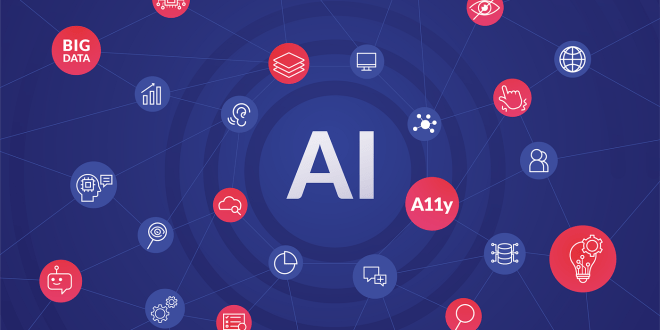In today’s digital age, user experience (UX) plays a critical role in the success of any product or service. However, for a long time, accessibility in UX has been an afterthought, leaving many users with disabilities facing barriers when interacting with digital platforms. Thanks to the rapid advancements in Artificial Intelligence (AI), the landscape is changing. Designing for inclusivity is becoming a reality, as AI is revolutionizing accessibility in UX. In this blog, we will delve into the various ways AI is transforming the design process, ensuring that user interfaces are accessible to all. Let’s explore the powerful potential of AI in creating a more inclusive digital realm.
Understanding the Importance of Inclusivity in UX
To start our journey, we must first grasp why designing for inclusivity is crucial in UX. Accessibility is not merely a checkbox to tick off; it’s about providing equal opportunities for all users to engage with digital content. With over a billion people worldwide living with some form of disability, the demand for inclusive experiences is more significant than ever. AI offers innovative solutions that bridge the accessibility gap and enable users to navigate digital interfaces effortlessly.
Leveraging AI to Identify User Needs
One of the core strengths of AI lies in its ability to gather and analyze vast amounts of data to identify user needs. By employing AI-driven tools, designers can gain deeper insights into the requirements of users with disabilities. These insights lead to informed decisions and tailored UX designs that cater to a diverse audience.
Enhancing User Interface Design with AI
AI-powered user interface design software is a game-changer for designers and developers. These tools use machine learning algorithms to generate accessible interfaces automatically. Designers can now leverage these intelligent systems to streamline the creation of user-friendly interfaces that accommodate different abilities and preferences.
Embracing Inclusive Design Principles
Inclusivity is not a mere feature; it’s an inherent aspect of the design process. AI empowers designers to integrate inclusive design principles from the outset. By prioritizing accessibility through AI-driven suggestions and insights, designers can ensure that the end product caters to diverse user needs without compromising on aesthetics or functionality.
The Role of AI in Content Adaptation
Another aspect where AI shines in enhancing accessibility is content adaptation. AI algorithms can analyze content and reformat it to suit different devices and user preferences. For instance, users with visual impairments can benefit from AI-driven text-to-speech and speech-to-text functionalities, providing them with a seamless browsing experience.
AI-Powered Personalization for Accessibility
Personalization is a key aspect of modern UX design, and AI takes it to the next level by enabling tailored experiences for users with disabilities. AI algorithms can learn from user interactions, preferences, and assistive technologies to customize the UX, ensuring it suits individual needs perfectly.
Overcoming Language Barriers with AI
Language should never be a barrier to accessibility. AI-driven language translation tools enable content to be presented in multiple languages, breaking down language barriers and making digital content universally accessible.
Ensuring Inclusive AI Design: Ethical Considerations
As AI continues to shape accessibility in UX, we must be mindful of the ethical implications. Bias within AI algorithms can inadvertently perpetuate discrimination. Therefore, designers and developers must prioritize ethical AI practices to ensure fairness, transparency, and inclusivity in all AI-driven designs.
The Future of Inclusive UX with AI
The symbiotic relationship between AI and inclusivity in UX holds immense promise for the future. As AI technologies evolve, we can expect even more sophisticated solutions that cater to a broader range of disabilities and user preferences. By embracing these advancements, designers and developers can create a digital world that truly leaves no one behind.
Final words
Designing for inclusivity is no longer a distant goal but a reality we can achieve with AI-powered advancements. As we harness the potential of AI, we unlock a world of accessible user experiences, breaking down barriers and empowering users of all abilities. By embracing inclusive design principles and leveraging AI technologies, we pave the way for a future where digital platforms are truly for everyone. Let’s take this transformative journey together and build a more inclusive digital realm.
Commonly Asked Questions
Q1. How does AI help improve accessibility in UX?
AI plays a vital role in enhancing accessibility in UX by providing tools and insights that enable designers to create interfaces tailored to diverse user needs. AI-driven personalization, content adaptation, and inclusive design principles ensure a seamless experience for users with disabilities.
Q2. Are AI-powered design tools easy to use for designers?
Yes, AI-powered design tools are designed to be user-friendly and intuitive. They assist designers throughout the design process, offering suggestions and automating repetitive tasks, making the creation of accessible interfaces more efficient and effective.
Q3. Can AI algorithms address bias in UX design?
While AI algorithms can help reduce bias by focusing on inclusivity, it is essential for designers and developers to be vigilant in ensuring ethical AI practices. Addressing bias requires a conscious effort to prioritize fairness and representation in all aspects of AI design.
Q4. How does AI contribute to multilingual accessibility?
AI-driven language translation tools enable content to be presented in multiple languages, making digital platforms more accessible to users worldwide. These tools break down language barriers, ensuring that language diversity doesn’t hinder the user experience.
Q5. What does the future hold for inclusive UX design with AI?
The future of inclusive UX design with AI is promising. As AI technologies continue to advance, we can expect even more innovative solutions that cater to an ever-widening range of disabilities and user preferences, fostering a truly inclusive digital environment.
 webfily
webfily



